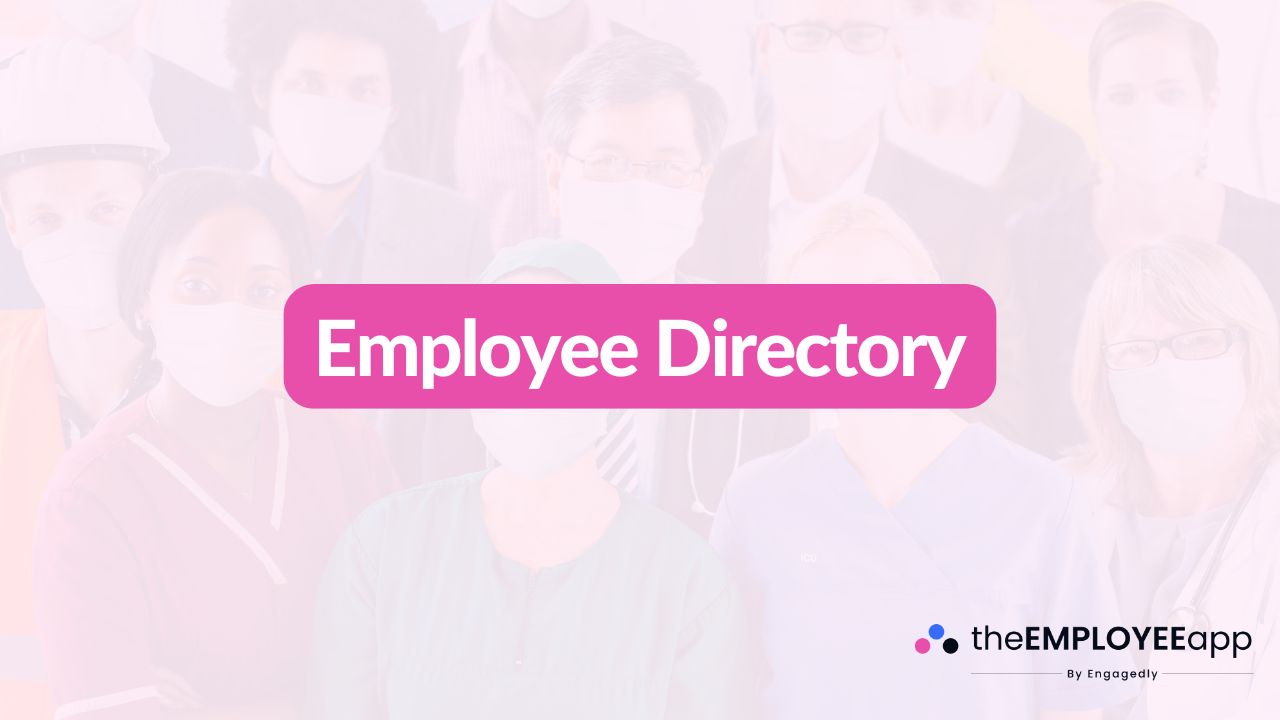
Employee Directory
An employee directory is a centralized database that contains detailed information about all employees within an organization. Traditionally, this information might have been stored in printed lists or spreadsheets, but in today’s digital workplace, modern employee directories are interactive, mobile-friendly, and integrated into internal communication platforms.
At its core, an employee directory is more than just a contact list. It serves as a digital hub where employees can easily search for colleagues, find essential contact details, understand reporting structures, and even learn about a coworker’s role and responsibilities. By bridging information gaps, an employee directory strengthens workplace collaboration and supports a culture of transparency.
Why an Employee Directory Matters
In fast-paced organizations, especially those with remote teams, frontline workers, or multiple office locations, it can be difficult for employees to know who does what. An employee directory solves this problem by making information accessible and easy to navigate. Instead of wasting time sending emails to the wrong person or searching through outdated spreadsheets, employees can quickly locate the right colleague, saving both time and frustration.
Furthermore, having a well-maintained employee directory fosters stronger connections among employees. It encourages cross-team collaboration, helps new hires adapt faster, and ensures leaders can communicate with the right people when urgent issues arise.
Key Features of an Effective Employee Directory
Modern employee directories go beyond names and phone numbers. Depending on the platform, they can include:
Basic contact details: Name, job title, department, email address, and phone number.
Photos and bios: Profile photos and short descriptions that help personalize the workplace experience.
Organizational charts: A visual representation of reporting structures and team hierarchies.
Skills and expertise tags: Quick ways to identify subject matter experts across the company.
Search and filters: Easy navigation to find employees based on role, location, or department.
Integration with communication tools: Direct links to chat, call, or email functions.
Benefits of Using an Employee Directory
Implementing a digital employee directory offers several organizational benefits:
Improved communication: Employees can connect faster, reducing delays in projects.
Better collaboration: Cross-departmental teamwork becomes more efficient when colleagues can easily find the right person.
Stronger employee engagement: By making information transparent and accessible, employees feel more connected to their workplace.
Faster onboarding: New hires can quickly understand who’s who in the company, reducing the learning curve.
Support for remote and frontline workers: A mobile-first directory ensures employees on the go always have access to the latest information.
Best Practices for Maintaining an Employee Directory
To ensure your employee directory remains effective, organizations should follow a few best practices:
Keep it updated: Outdated information reduces trust and usability. Assign responsibility to HR or IT teams to keep profiles current.
Encourage employee participation: Employees should be able to update their own profiles with accurate photos, bios, and skills.
Ensure accessibility: Make the directory available on both desktop and mobile platforms so employees can access it anytime.
Integrate with other systems: Connecting the directory with HR, payroll, or communication tools ensures accuracy and eliminates duplicate work.
Respect privacy and security: Balance transparency with data protection, ensuring only relevant professional information is displayed.
The Future of Employee Directories
As organizations continue to embrace hybrid and digital-first work, the employee directory is evolving into an essential communication and engagement tool. With AI and automation, directories can soon suggest relevant contacts based on project needs, highlight employee achievements, and even integrate with recognition platforms. This turns the employee directory into a living, dynamic part of workplace culture rather than just a static list.
In summary, an employee directory is a vital tool for any modern organization. It not only provides quick access to contact details but also strengthens collaboration, improves engagement, and supports a culture of transparency. By adopting digital, mobile-friendly directories and following best practices, organizations can ensure employees are always connected, informed, and empowered to work effectively together.
